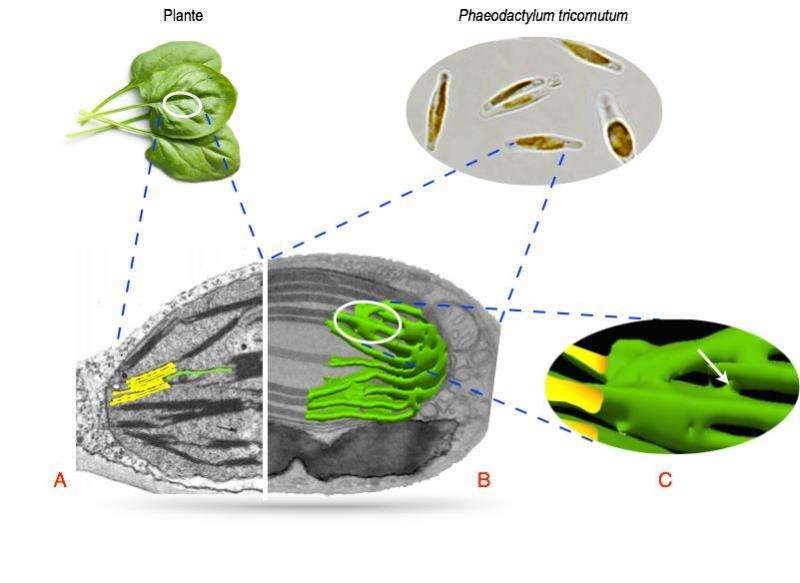How phytoplankton rule the oceans

Photosynthesis is a unique biological process that has permitted the colonization of land and sea by plants and phytoplankton respectively. While the mechanisms of photosynthesis in plants are well understood, scientists are only now beginning to elucidate how the process developed in phytoplankton.
In collaboration with scientists from several countries, researchers from the Cell and Plant Physiology Laboratory (CNRS/CEA/UGA/Inra), the Institut de Biologie Structurale (CNRS/CEA/UGA), the LEMMA Advanced Electron Microscopy Laboratory (CEA/UGA), and the Laboratory of Membrane and Molecular Physiology of the Chloroplast (CNRS/UPMC) have proposed a structural model of the photosynthetic process in phytoplankton, based on studies of the diatom Phaeodactylum tricornutum. Their findings are published in Nature Communications on June 20, 2017.
Photosynthesis is a remarkable mechanism for the transformation of light energy into chemical energy. Two miniature photochemical power plants make it possible: photosystem I (PSI) and photosystem II (PSII). But ideal conditions demand that PSI and PSII be kept apart, to avoid any "short circuits" that would make photosynthesis less effective. In plants, the two photosystems are separated by structures (see image A) that do not seem to exist in phytoplankton (see image B). But then how can phytoplankton be responsible for half of all photosynthesis on our planet?
By adapting different high-resolution cellular imaging methods to Phaeodactylum tricornutum, the researchers were able to create a 3-D model of the photosynthetic system in diatoms (see image C). They detected microscopic subdomains, permitting separation—as in plants—of the two photosystems for greater efficiency. These findings explain how diatoms may account for approximately 20% of all oxygen production on Earth, and why they have thrived in the oceans for about 100 million years.
The researchers are continuing to develop their 3-D model of diatom photosynthesis, which should enable them to understand how these unicellular organisms may adapt to the effects of climate change.
More information: Serena Flori et al. Plastid thylakoid architecture optimizes photosynthesis in diatoms, Nature Communications (2017). DOI: 10.1038/NCOMMS15885
Journal information: Nature Communications
Provided by CNRS




















